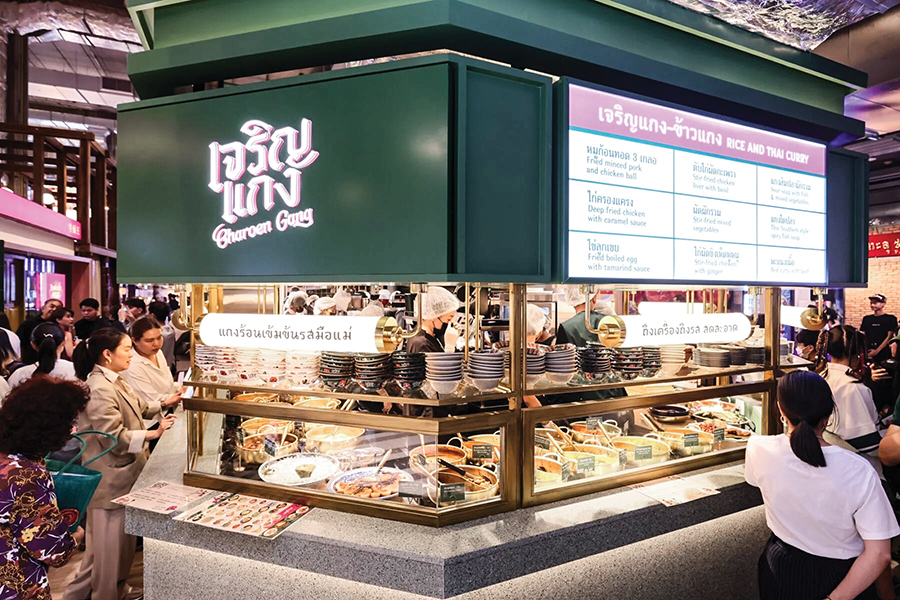In this article, Allan Forsdick of Future Food explores the evolving trends that are driving the critical role of curated food and hospitality in enhancing customer experiences and creating sustainable F&B precincts in an omnichannel retail landscape.
In the dynamic landscape of modern shopping centres and mixed-use precincts, the curated integration of food, dining and hospitality experiences has become pivotal to reshaping the profiles of existing properties and the newest developments globally.
The (re)integration of a compelling food and hospitality offer into a precinct is a complex process that, first and foremost, must respond to the needs and aspirations of the target markets identified through customer segmentation – a customer-centric approach – and one that is not replicable from centre to centre and one that evolves over time!
Successful food and hospitality precincts have broken free from the shackles of traditional thinking and perceptions of just an ‘amenity’ with three key success factors: curation of the mix and experience, a sustainable volume of planned F&B space, and an engaging customer-centric design.
21st century F&B precincts require 21st century solutions
In an ever-increasing ‘experience’ per square metre economy, food, dining, and hospitality continue to drive the profile of the newest shopping centres and mixed-use developments globally. In an omni-channel world, shopping centres and mixed-use precincts need more than just great shopping. Food and hospitality spaces have now moved beyond merely facilitating human connection to enhancing the experience and are now paramount in attracting customers into social spaces, creating a sense of belonging in a world where progress and convenience continue to prioritise retail in the digital arena.
Trends in food and hospitality in 2024 are driven by deciphering the terrain of the individual project and the needs of its customers, which continue to demand differentiated experiences that are elevated, curated, unique, niche or premium quality, regardless of the positioning of the offer.
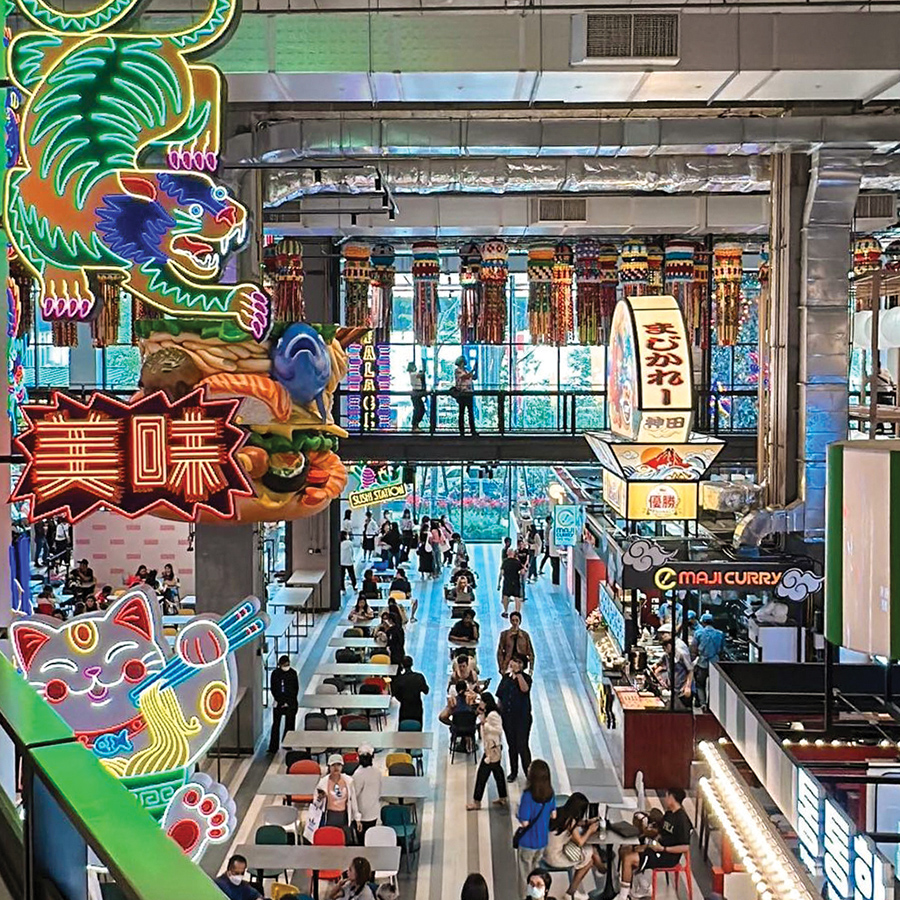
Emsphere Food Mall, Bangkok
In Bangkok’s newest and most talked about shopping centre, EmSphere (by The Mall Group), food and hospitality are not merely precincts in the centre but are also major anchors.
EmSphere is a 200,000m2 mall in Sukhumvit, featuring brands such as Apple, IKEA (Thailand’s first) and Tesla, as well as the EmLive Arena. But it is the innovative dining precincts across more than two floors of the centre that are grabbing the column inches and the fancy of locals and tourists.
Attention grabbers, such as the Gourmet Market, a 24/7 premium supermarket, and EM Market – an international food hall with 25 choices from predominantly local Thai favourites and a light garnish of global brands – ensure that food is front and centre of the building’s cast and a key part of the welcome statement of the centre. Tribe Sky Beach Club categorically extends the offer past retail-o’clock with dining, drinks and DJs through to 1am daily.
EmSphere’s key marketing message is driven by food and beverage that extends customer engagement beyond the standard retail day. This matches the reputation of the city in which it services and aligns with its target markets, meeting the demands of the densely populated city.
Many contemporary mixed-use projects and lifestyle centres are focused first and foremost on generically trying to capture footfall, folding in a myriad of uses around the physical asset rather than creating a ‘destinational centre’ for their target markets. A 21st century approach is about anchoring the site with the critical mass of its own community and leveraging the success of its core target market to drive and attract additional customers.
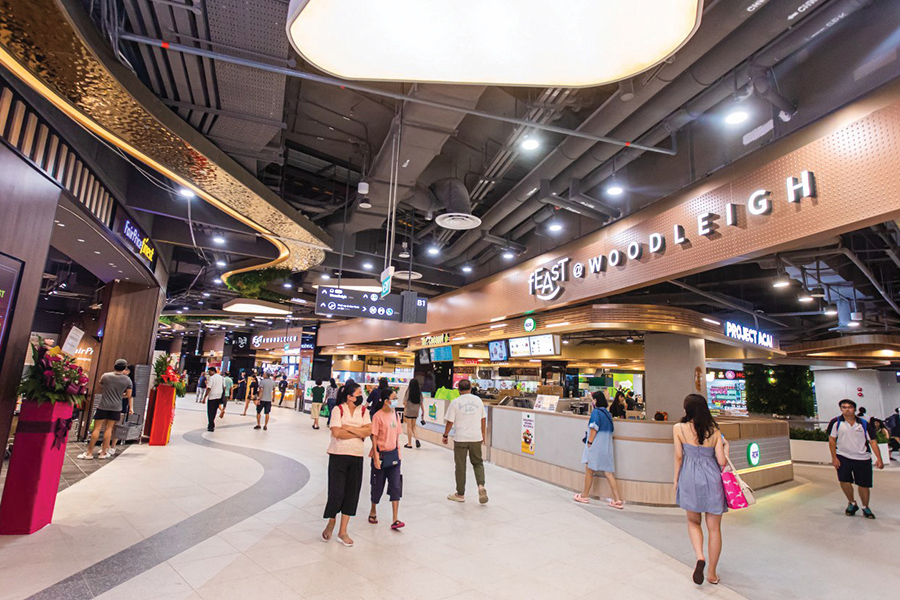
Feast at Woodleigh, Singapore
The Woodleigh Mall in Bidadari Singapore is a food mall rather than a mall with food. Its retail mix is dominated by more than 70 restaurants, cafes and food kiosks. The diversity of positioning includes impulse, snack and confectionary retailers, including ‘Feast’ a collective of takeaway, fast bites, fast food majors, restaurants and a brewery. Woodleigh also features a new outpost of the popular ‘Food Republic’, a street food hawker market operated by the BreadTalk Group that continues to grow in popularity and number across Asia from Singapore to Shenzhen.
This centre exemplifies all the traits of a curated shopping centre that has chosen to build its reputation on the back of a destinational food and hospitality offer that meets the needs of its core customer target markets, which has the population density to support a sustainable F&B footprint.
Despite this continual growth of food halls and F&B dominated precincts across Asia, Europe and North America, it is a concept that until recently has struggled to take off in Australia or New Zealand with any great momentum.
The success of Commercial Bay on Auckland’s waterfront is a prime example of a food and beverage-anchored mixed-use project on a more local scale. It was developed by Precinct Properties, with a vision to further activate the waterfront and become a retail and dining destination for the people that downtown Auckland was lacking.
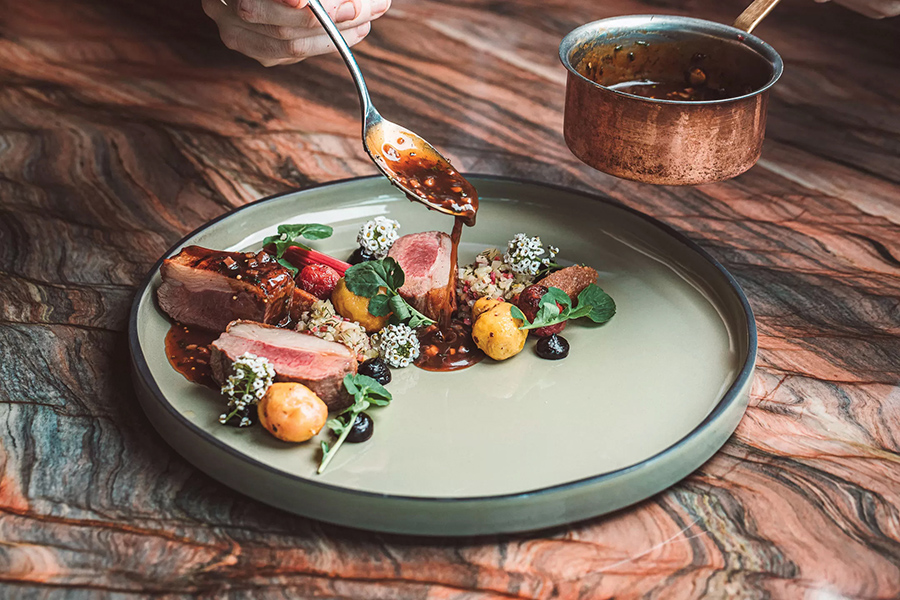
Ahi Restaurant Commercial Bay, NZ
In this ground-breaking precinct, food and beverage represents approximately 40% of Commercial Bay’s tenant base, which has completely flipped historical representation of retail precincts locally, as we know it. While opening during challenging circumstances in mid-2020, it has continued to gain momentum during the past three years and reshaped downtown Auckland.
Delivering precincts with an anchored rational and curated strategy is a critical step to minimise the risk inherent in establishing a dining destination and exemplifies the delicate balance between showcasing an innovative project and yet remaining relevant to the intended target markets.
Commercial Bay, as an example, is anchored by a 38-level PwC Tower and a newly opened 139-key, 5-Star Intercontinental Hotel (opened January 2024), which is in contrast to traditional centre anchors of entertainment and lifestyle precincts, large footprint retail giants or major department stores. The F&B mix very much reflects the core user groups within the precinct and responds to their needs throughout the day. With two multi-chef hat-awarded restaurants (Ahi and Lodge Bar & Dining) and a further single-hatted restaurant (Origine) all being recognised in the 2023/24 Cuisine Good Food Awards, it is evident that a well-curated F&B mix remains a strong focus for this precinct.
Sustainable F&B floorplate – the numbers tell the story
Unsurprisingly, developers and architects aspire to push boundaries with ground-breaking concepts and designs for the physical built space, financially supported by a mixed set of returns from the different residential or commercial usages. For the justification of food and hospitality, the best practice is to have a detailed approach with a separate specialised business case that underpins the same aspirations. Determining the correct data inputs to quantify the total F&B market potentialis crucial in refining the spatial modelling (m2) with the corresponding sustainable revenue. The devil is in the detail, understanding the implication of the individual physical tenancy spaces and adjacencies to achieve the best physical fit for the precinct, remaining aligned to the target markets.
The best precincts exceed customer expectations with early guidance from hospitality experts immersed in their field, providing unparalleled insight to maximise the food experience economy and create sustainable returns.
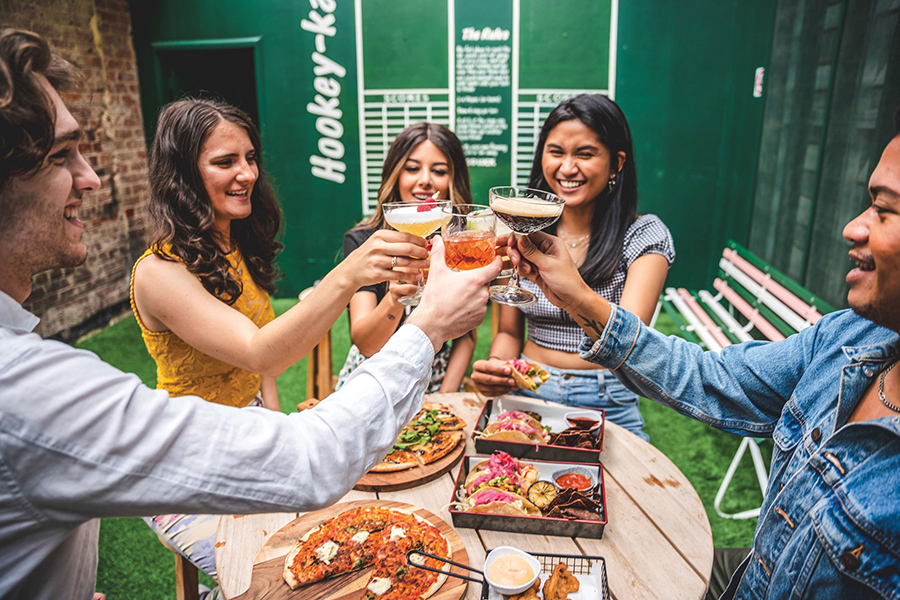
Ballers Clubhouse, Melbourne
Size isn’t everything in the experience economy
We have recently witnessed the closure of large footprint concepts, including The Bavarian at Westfield Knox, Tea Tree Plaza and Penrith, as well as a host of Hog’s Breath Café sites nationally, with CEO Steven Spurgin quoted as saying they “will be looking at new sites with smaller model restaurants in these areas”.
While there is still a time and a place for large-footprint F&B concepts, the biggest and best may not be the way to win the hearts of your target markets and certainly younger segments who are likely to be looking for unique, new or niche brand experiences, rather than mass market appeal brands.
These types of experiences tended to be high street (smaller footprint) or, more likely, off high street in semi-industrial locations (larger footprint), supporting the branding positioning and offering financial advantages. Yet, there has been a growing movement and opportunity to attract these brands through incentivisation and concept adaptation to both fill the gap in the individual target market needs and expose the brand to new audiences.
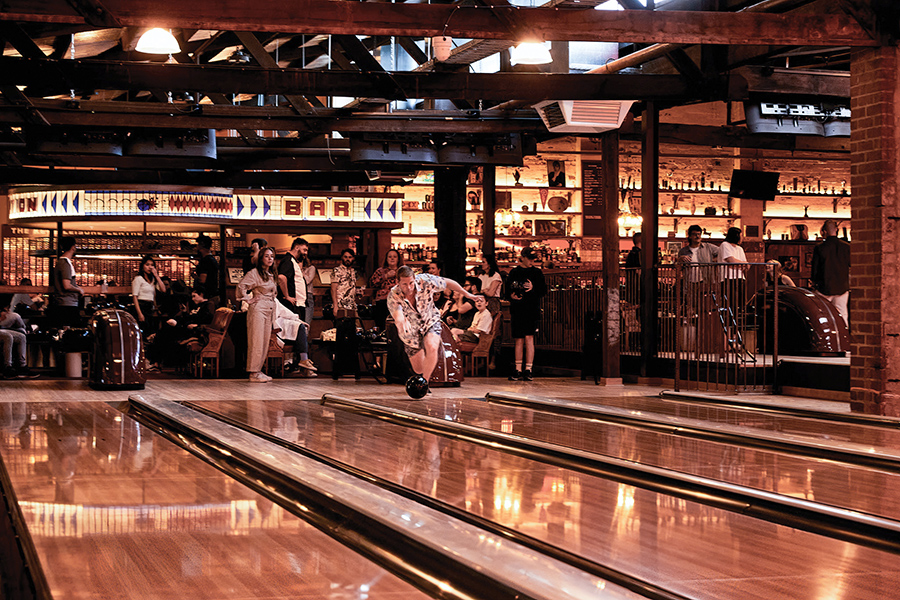
The Keys, Preston
The Big Gun landscape – is small no longer beautiful?
As we look to the future of developments in Australia and New Zealand in the next two to five years, from a Big Guns lessons learnt perspective, it is reasonable to pose the question: Are large format smart casual/elevated (>500m2 tenancy) food experience dining and entertainment precincts sustainable across the day parts each week, through un-met demand from existing target markets?
It’s all too easy to say yes for a Big Gun. From a considered food and hospitality perspective, it’s not a straightforward answer. It requires significant experience, research and data analytics to curate a food and hospitality mix that is tailored to the centre’s target market and yet still practical and sustainable. There is ample appetite generally in the ‘food experience’ consumer’s mind for curated, elevated or premium experiences in beautifully designed precincts that push the boundaries – but never let the concept overshadow the needs of the core target audience.
Stepping back from a single target market, we see commonalities across the consumer spectrum that we can draw from as guiding principles. Consumers are looking for layered, engaging concepts featuring discovery and innovation rather than carbon copy ELPs and F&B offers. They seek a wider range of diversity (cuisine, service style and convenience) and want engagement with F&B brands on their terms – when, where and how more so than ever before.
As many Big Guns aim to further diversify into mixed-use developments or lifestyle precincts, the focus on creating curated, memorable and repeatable experiences becomes even more paramount. Developers must align with the preferences of the target audience, considering daily and weekly dynamics to ensure sustained success. Solving target market needs through market research and data-driven, independent specialist insights will craft a strategy for long-term success – embrace the 21st century evolving landscape.
This article is published in the latest issue of SCN. Premium members can view the digital magazine here.


